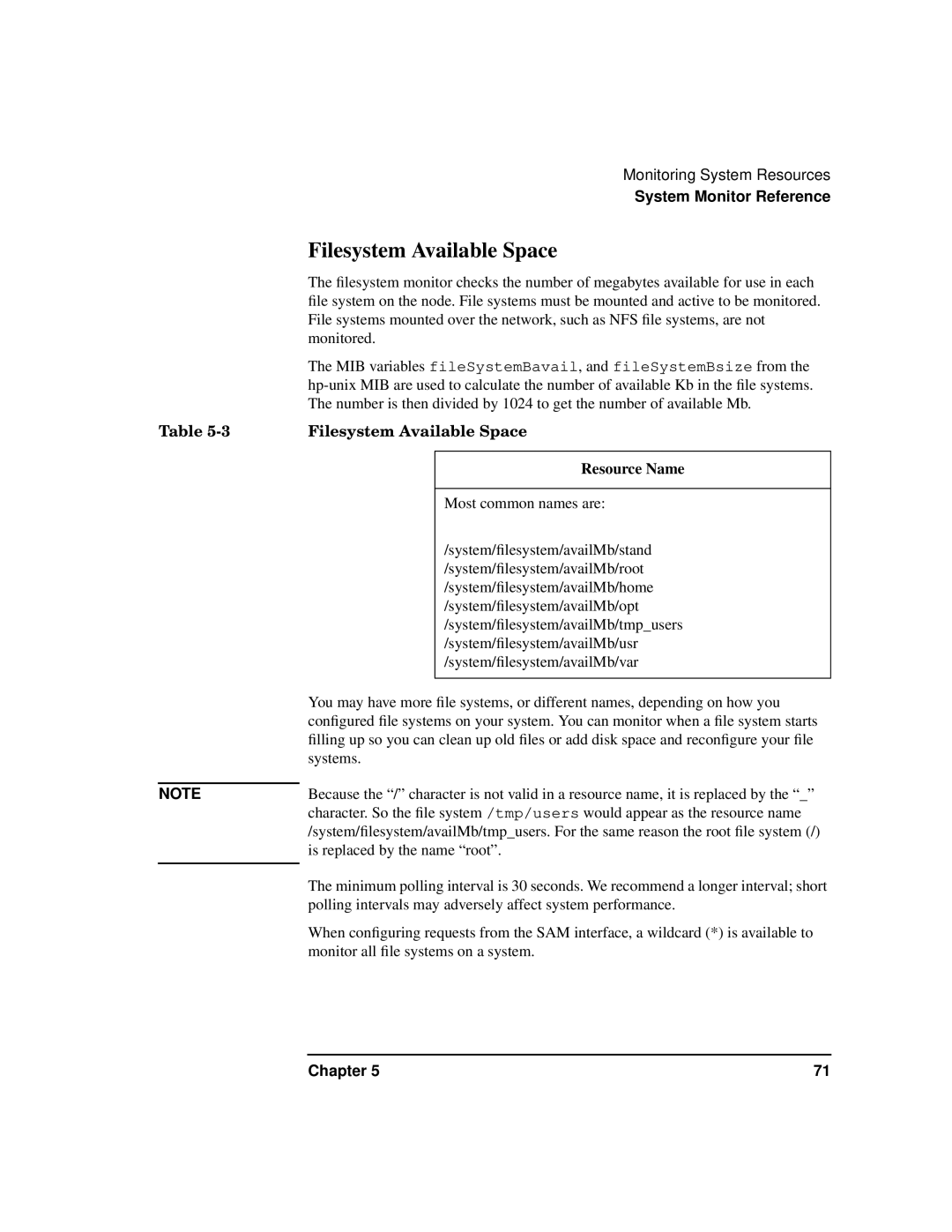
Monitoring System Resources
System Monitor Reference
| Filesystem Available Space | |
| The filesystem monitor checks the number of megabytes available for use in each | |
| file system on the node. File systems must be mounted and active to be monitored. | |
| File systems mounted over the network, such as NFS file systems, are not | |
| monitored. | |
| The MIB variables fileSystemBavail, and fileSystemBsize from the | |
| ||
| The number is then divided by 1024 to get the number of available Mb. | |
Table | Filesystem Available Space | |
|
|
|
|
| Resource Name |
|
|
|
|
| Most common names are: |
|
| /system/filesystem/availMb/stand |
|
| /system/filesystem/availMb/root |
|
| /system/filesystem/availMb/home |
|
| /system/filesystem/availMb/opt |
|
| /system/filesystem/availMb/tmp_users |
|
| /system/filesystem/availMb/usr |
|
| /system/filesystem/availMb/var |
|
|
|
| You may have more file systems, or different names, depending on how you | |
| configured file systems on your system. You can monitor when a file system starts | |
| filling up so you can clean up old files or add disk space and reconfigure your file | |
| systems. | |
|
|
|
NOTE | Because the “/” character is not valid in a resource name, it is replaced by the “_” | |
| character. So the file system /tmp/users would appear as the resource name | |
| /system/filesystem/availMb/tmp_users. For the same reason the root file system (/) | |
| is replaced by the name “root”. | |
| The minimum polling interval is 30 seconds. We recommend a longer interval; short | |
| ||
| polling intervals may adversely affect system performance. | |
| When configuring requests from the SAM interface, a wildcard (*) is available to | |
| monitor all file systems on a system. | |
Chapter 5 | 71 |
